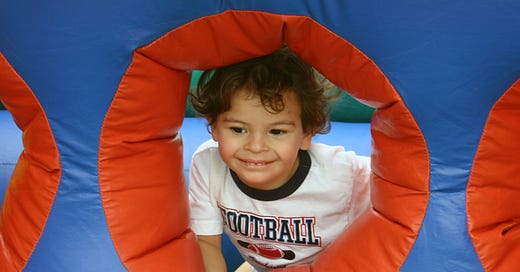I have always believed that creative ideas— as in designers coming up with those famous aha moments— come from reading and good conversations about the topic. Talking about topics, implications, consequences, impact, and relevance often leads to unique and profound creative ideas. There are three things I try to provide in classes: a safe space for open discussion, autonomy, and agency.
This week I assigned my students a new project. This project is to design a simple GIF that speaks to mental health. They had to research what mental health is, pick something to focus on, and come up with their own phrase. The GIF needs to look legit as if it had been commissioned by a mental health provider or association to create awareness, provide encouragement, and/or provide resources.
I love teaching about the richness of typography. As we know typography is visual communication. Another way to say this is that typography is how we dress our words to read a message. Just like we dress according to where we are going and what we are doing, a message needs to have the proper attire to meet its objective. My goal is two fold: to identify how the way we dress a message affects how said message is received and to make the students aware of their role as designers in making and molding messages that will be seen by others.
This semester I have adopted a new practice almost by accident. For our first project I had to attend a number of meetings that conflicted with the class time. I could not move the deadlines. Usually we discuss their research for a project in class in an open forum type of conversation or we draw in large pieces of paper. By necessity, I assigned them to write a two page paper on that first topic (Turnitin active on the portal so they can see their results). When I came back to class to discuss the papers, I was blown away by their participation. They had things to say and they were eager to tell them.
Since it worked so well the first time, I tried it again. Once again, I was impressed with the active discussion. They quoted to me the DSM 5, and listed to me the most common mental health conditions, some of which are not recognized in the manual but mental health providers deal with them nonetheless. We had a rich discussion. One of the students properly cited a statistical reference: there are “over 50 million Americans” suffering with some form of mental health in this country.
There was a vulnerability in the class that was outstanding without getting creepy or weird. It was a beautiful moment of true conversation about something that affects all of us in some way.
That statistic prompted the student to ask what was the purpose and goal of our project given the enormity of the numbers. “What good could they do? What difference would their project do?” Eloquent questions given what they had found in the research. Some talked about their personal struggles with their family or themselves. This included me. There was a vulnerability in the class that was outstanding without getting creepy or weird. It was a beautiful moment of true conversation about something that affects all of us in some way.
One word kept coming at me in the class during the discussion. That was empathy.
One word kept coming at me in the class during the discussion. That was empathy. The word was not said but it was clear that they started to understand their assignment: design and develop a GIF that uses your phrase in such a way that at least one person sees themselves in it and it encourages them to seek help.
The sketches were amazing. The way the students were thinking about the typography carrying the message and visualizing it was exquisite. Of course, once they move to the computer, there is usually a drop as they learn to close the gap between what they see in their minds and what their skill lets them do. And me pointing out the areas that need finessing. We shall see how it goes this week.
In the context of unprecedented technological enmeshment, I would say that it is more important than ever to keep our students reading, writing, and sketching.
Design education overall will soon face challenges due to the increasing implementation of AI in our design tools and society. Some could say that there is no need to write papers or sketch ideas. And they will be completely off the mark. In the context of unprecedented technological enmeshment, I would say that it is more important than ever to keep our students reading, writing, and sketching. Their voices can’t be and should not be shut because x or y can be done faster. Our most precious assets are our minds, our ideas, our words, and our sketches.
Simple and inexpensive tools like a pencil or pen and a piece of paper stand the test of time and have remained relevant while giving us a historical witness of who we have been and who we are as a civilization. This is why I still assign sketches and lots of them, and why I still assign readings and papers. The mind needs to be fed and exercised. Design education should do just that.
Love,
Alma




